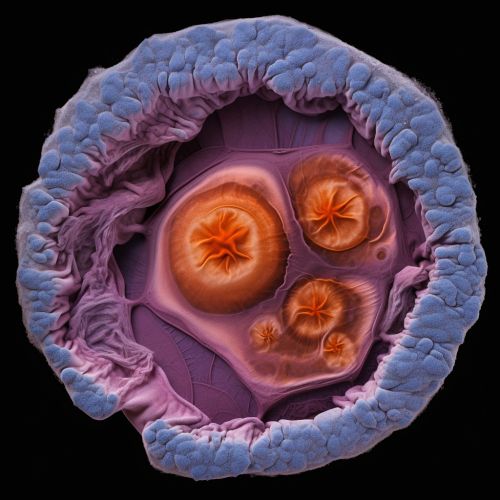Organogenesis
Introduction
Organogenesis is a fundamental process in the development of multicellular organisms, including animals and plants. It involves the formation and differentiation of organs from the three primary germ layers: the ectoderm, mesoderm, and endoderm. This process is regulated by a complex interplay of genetic and environmental factors, leading to the formation of diverse organs, each with a specific structure and function.


Overview of Organogenesis
Organogenesis begins during the embryonic stage of development, following the process of gastrulation. Gastrulation results in the formation of the three germ layers, which serve as the foundation for organ development. Each germ layer gives rise to specific organs and tissues. For instance, the ectoderm forms the skin and nervous system, the mesoderm forms the muscles, skeleton, and circulatory system, and the endoderm forms the digestive and respiratory systems.
Mechanisms of Organogenesis
Organogenesis is a highly regulated process that involves a series of developmental events, including cell proliferation, differentiation, migration, and apoptosis. These events are controlled by various molecular mechanisms, including the activation of specific gene expression pathways and the interaction of cells with their surrounding environment, known as the extracellular matrix.
Cell Proliferation and Differentiation
During organogenesis, cells proliferate and differentiate into various cell types. This process is regulated by a variety of factors, including growth factors, hormones, and transcription factors. Growth factors are proteins that stimulate cell proliferation and differentiation. Hormones are chemical messengers that regulate various physiological processes, including cell growth and differentiation. Transcription factors are proteins that control the expression of genes, thereby influencing cell identity and function.
Cell Migration
Cell migration is a critical process during organogenesis. It involves the movement of cells from their original location to a new location, where they contribute to the formation of a specific organ. Cell migration is guided by various signals, including chemical gradients and mechanical cues from the extracellular matrix.
Apoptosis
Apoptosis, or programmed cell death, plays a crucial role in organogenesis. It allows for the removal of unnecessary or damaged cells, thereby contributing to the shaping and patterning of organs. Apoptosis is regulated by various molecular pathways, including the activation of specific genes and proteins.
Role of Genes in Organogenesis
Genes play a crucial role in organogenesis, as they control the expression of proteins that regulate various developmental processes. Mutations in these genes can lead to developmental abnormalities, highlighting the importance of genetic regulation in organogenesis.
Hox Genes
Hox genes are a group of genes that play a key role in organogenesis. They are responsible for the patterning of the body axis, determining where and when organs develop. Hox genes are highly conserved across different species, indicating their fundamental role in development.
Homeobox Genes
Homeobox genes are another group of genes that are critical for organogenesis. They encode for proteins known as homeodomain proteins, which bind to DNA and regulate gene expression. Like Hox genes, homeobox genes are highly conserved and play a crucial role in the patterning and development of organs.
Organogenesis in Different Organisms
Organogenesis occurs in a variety of organisms, including mammals, birds, reptiles, amphibians, and fish. While the basic principles of organogenesis are conserved across different species, there are also species-specific differences in the timing, sequence, and mechanisms of organ development.
Organogenesis in Mammals
In mammals, organogenesis begins shortly after gastrulation. The three germ layers differentiate into various cell types, which then proliferate, migrate, and organize into specific organs. The process of mammalian organogenesis is complex and involves the interaction of multiple genetic and environmental factors.
Organogenesis in Birds
Birds, like mammals, undergo organogenesis following gastrulation. However, there are some differences in the sequence and timing of organ development. For instance, the heart and nervous system develop earlier in birds than in mammals.
Organogenesis in Reptiles
Reptiles also undergo organogenesis, with the development of organs such as the heart, lungs, and kidneys. The process of reptilian organogenesis is similar to that in mammals and birds, but there are some differences in the timing and sequence of organ development.
Organogenesis in Amphibians
Amphibians undergo a unique process of organogenesis, known as metamorphosis. During metamorphosis, the larval organs are reorganized and transformed into adult organs. This process is regulated by the hormone thyroxine and involves extensive cell proliferation, differentiation, and apoptosis.
Organogenesis in Fish
Fish undergo organogenesis similar to other vertebrates. However, there are some differences in the sequence and timing of organ development. For instance, the heart and nervous system develop earlier in fish than in mammals.
Clinical Implications of Organogenesis
Understanding the process of organogenesis has important clinical implications. It can provide insights into the causes of various congenital disorders and can potentially lead to the development of therapeutic strategies for organ repair and regeneration.
Congenital Disorders
Disruptions in the process of organogenesis can lead to various congenital disorders. These include birth defects, such as heart defects, neural tube defects, and cleft palate. Understanding the molecular mechanisms of organogenesis can help in the diagnosis and treatment of these disorders.
Organ Repair and Regeneration
Insights into the process of organogenesis can also contribute to the field of regenerative medicine. By understanding how organs develop, scientists can potentially develop strategies to repair or regenerate damaged organs. This could have significant implications for the treatment of various diseases, including heart disease, liver disease, and kidney disease.
